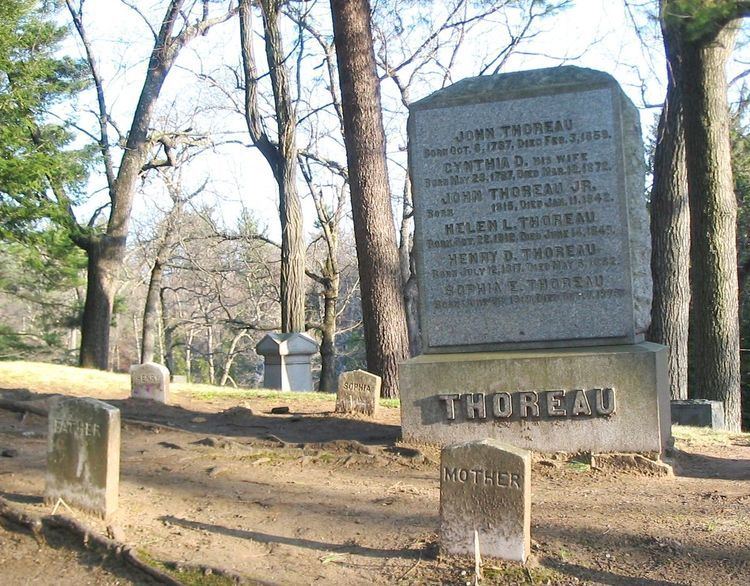Established 1855 Type Public Find a Grave Sleepy Hollow Cemetery Year built 1823 Added to NRHP 19 August 1998 | Size 31.6 acres (12.8 ha) Founded 29 September 1855 Phone +1 978-318-3233 | |
 | ||
Address 34 Bedford St B, Concord, MA 01742, USA Similar Ralph Waldo Emerson, Orchard House, The Old Manse, Old North Bridge, Minute Man National | ||
Sleepy Hollow Cemetery is a cemetery located on Bedford Street near the center of Concord, Massachusetts. The cemetery is the burial site of a number of famous Concordians, including some of the United States' greatest authors and thinkers, especially on a hill known as "Author's Ridge."
Contents
History
Sleepy Hollow was designed in 1855 by noted landscape architects Cleveland and Copeland, and has been in use ever since. It was dedicated on September 29, 1855; Ralph Waldo Emerson gave a dedication speech and would be buried there decades later. Both designers of the cemetery had decades-long friendships with many leaders of the Transcendentalism movement, and their design reflects that.
"Sleepy Hollow was an early natural garden designed in keeping with Emerson's aesthetic principles," writes Joachim Wolschke-Bulmahn in his Nature and Ideology. In 1855, landscape designer Robert Morris Copeland delivered an address he entitled The Usefull [sic] and The Beautiful, tying his principles of naturalistic, organic garden design to Emerson's Transcendentalist principles. Shortly, afterward, Copeland and his partner were retained by the Concord Cemetery Committee, of which Emerson was an active member, to design a cemetery for the growing community.
On September 29, 1855, Emerson delivered the opening address of the cemetery's consecration. In it he lauded the designers' work. "The garden of the living," said Emerson, was as much for the benefit for the living, to communicate their relationship to the natural world, as it was to honor the dead. By situating the monuments to the dead within a natural landscape, the architects conveyed their message, said Emerson. A cemetery could not "jealously guard a few atoms under immense marbles, selfishly and impossibly sequestering [them] from the vast circulations of nature [which] recompenses for new life [each decomposing] particle."
Known as Sleepy Hollow for some 20 years prior to its use as a cemetery, the newly-consecrated landscape would, Emerson told his audience that September day in Concord, "When these acorns, that are falling at our feet, are oaks overshadowing our children in a remote century, this mute green bank will be full of history: the good, the wise, and the great will have left their names and virtues on the trees... will have made the air tuneable and articulate."
To realize their vision, Emerson noted that the cemetery's designers had fitted the walks and drives into the site's natural amphitheater. They also left much of the original natural vegetation in place, instead of removing it and replanting with ornamental shrubs, as was often the case. Several years after Emerson's address, a visitor to the new cemetery noted the abundance of wild plants such as woodbine, raspberry, and goldenrod, as well as the natural moss and roots of pine trees which were left in situ by the designers.
The Melvin Memorial, also known as Mourning Victory, sculpted by Daniel Chester French marks the grave of three brothers killed in the Civil War.
People are still being buried there. The back of the newer portion of the cemetery leads to a path system which connects to the Great Meadows National Wildlife Refuge.
